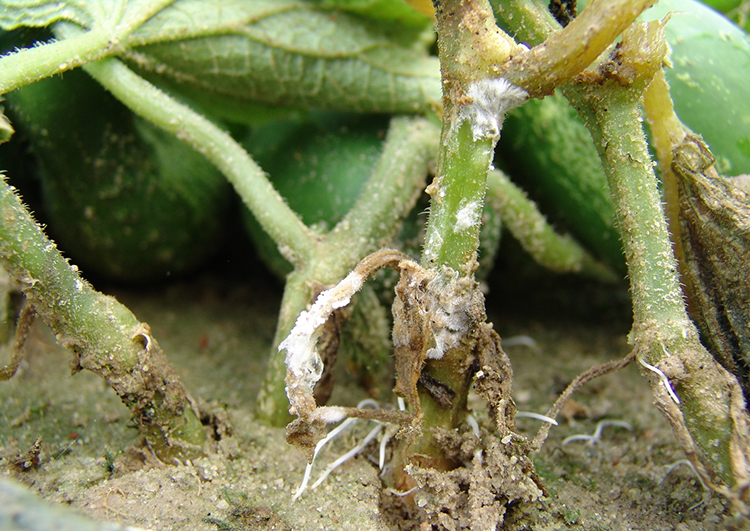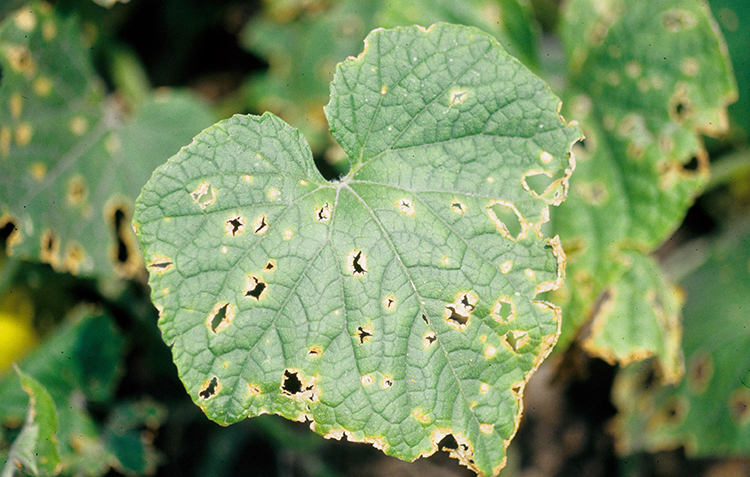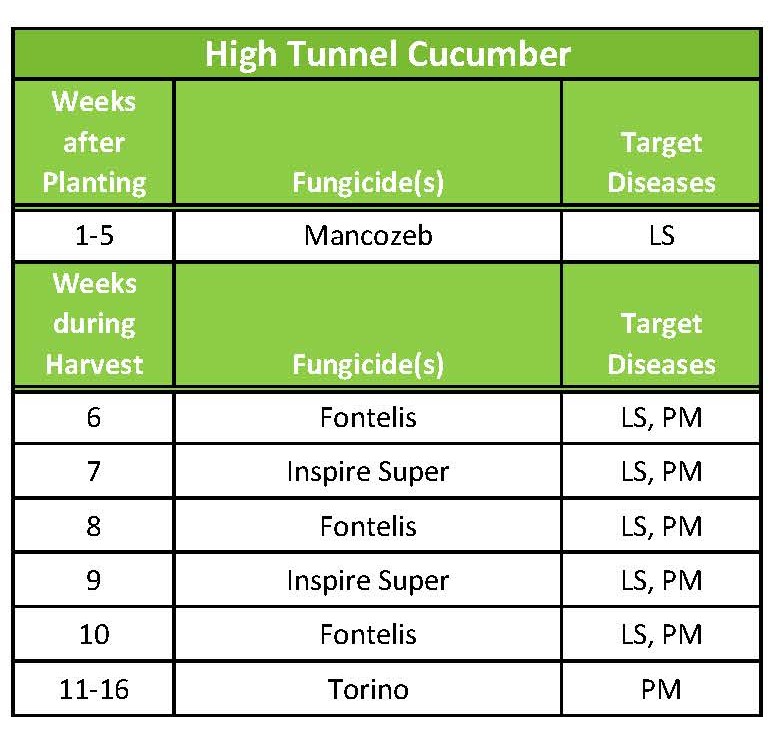Commercial Spray Schedule for High Tunnel Production of Cucumbers (PPFS-VG-33)
Download PDF
Nicole Gauthier, Plant Pathology Extension Specialist Kim Leonberger, Plant Pathology Extension Associate
Sara Long, Plant Disease Diagnostic Assistant Rachel Rudolph, Horticulture Extension Specialist
Introduction
High tunnel cucumber production allows growers to plant earlier in spring, resulting in fruit available for sale before field cucumbers can be marketed. Although high tunnels provide protection from weather and can help keep foliage dry, numerous plant pathogens can still infect high tunnel cucumbers resulting in plant and/or fruit loss. Applications of fungicides are often necessary to limit the impact from plant diseases. Fungicides provide the greatest efficacy when applied preventively (prior to disease onset). Growers should develop a spray schedule for each season to limit the impact of the various fungi that can affect cucumbers. This document provides information on the timing of the most common high tunnel cucumber diseases, as well as example spray schedules for conventional and organic systems. The fungicides recommended here include a few of the most common products. A complete list of registered fungicides can be found in Vegetable Production Guide for Commercial Growers (ID-36) and Southeast U.S. Vegetable Crop Handbook (SEVEW); generic products may also be available. In Kentucky, high tunnels are considered greenhouses; use only products that are labeled for greenhouse application.


Timeline of common and important diseases occurring on cucumber crops in high tunnel production.


1 Application necessary when diagnostic results confirm presence of disease or if field has a history of disease.
2 See SEVEW Table 3-53 Biopesticides for alternative products. (Note: This production guide is revised annually, and the location of this information could change with updates.)
Example field spray schedule for high tunnel cucumber production

LS - leaf spots; PM - powdery mildew
Disclaimer
Fungicides listed here include a few of the most common products available and were selected to simplify information in this publication. No endorsement is intended nor is criticism implied of similar products that are not named.
Additional Resources
- Cucumber Beetles (EntFact-311)
- IPM Pipe Cucurbit Downy Mildew Forecasting Website (website)
- Plant Pathology Extension Publications (UK)
- Southeast U.S. Vegetable Crop Handbook (SEVEW)
- Vegetable Production Guide for Commercial Growers (ID-36)
April 2024
Download PDF
Acknowledgments
The authors thank Wenjing Guan, Clinical/Engagement Associate Professor, Purdue University, and Henry Smith, Plant Pathology Graduate Student, University of Kentucky, for their reviews of this publication.
Editor: Cheryl Kaiser, Plant Pathology Extension Support
Photos: Gerald Holmes, Strawberry Center, Cal Poly San Luis Obispo, Bugwood.org
Educational programs of the Kentucky Cooperative Extension Service serve all people regardless of race, color, age, sex, religion, disability, or national origin.
